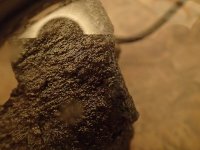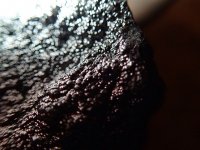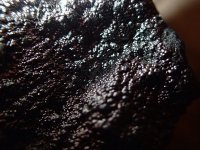Jim in Idaho
Silver Member
- Jul 21, 2012
- 3,349
- 4,750
- Detector(s) used
- White's GM2, GM3, DFX, Coinmaster, TDI-SL, GM24K, Falcon MD20, old Garrett Masterhunter BFO
'Way Too Cool' dual 18 Watt UV light
- Primary Interest:
- Prospecting
I finally had a decent weather day to head out to the desert. Found a somewhat strange rock. Extremely light, which isn't strange on the local desert, there's lots of porous basalt. But, this one has a silvery, metallic-looking coating on one side, as show in the pics. When placed in water, it initially floated, and then slowly sank as the surface voids filled with water. I scraped a bit of the silver coating off onto a piece of yellow paper. The particles are the size of dust. You can easily see the metallic-looking material. It's slightly magnetic, even the silver stuff. On the rock, it feels somewhat slick, and looks like little spheres.
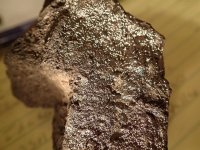
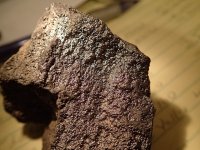
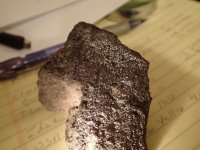
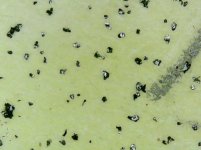 What is it?
What is it?
EDIT: When viewing this in the sunlight, it had a little prismatic effect....3 or 4 colors.
Jim



 What is it?
What is it?EDIT: When viewing this in the sunlight, it had a little prismatic effect....3 or 4 colors.
Jim
Last edited:


